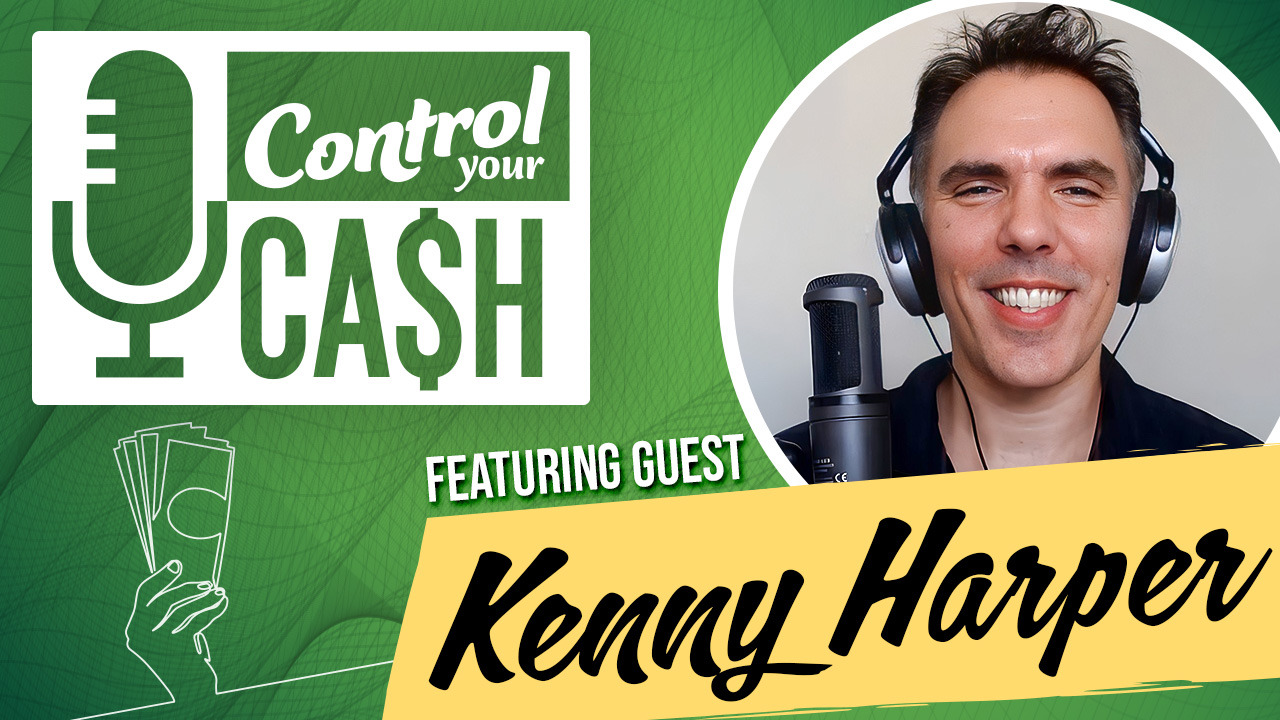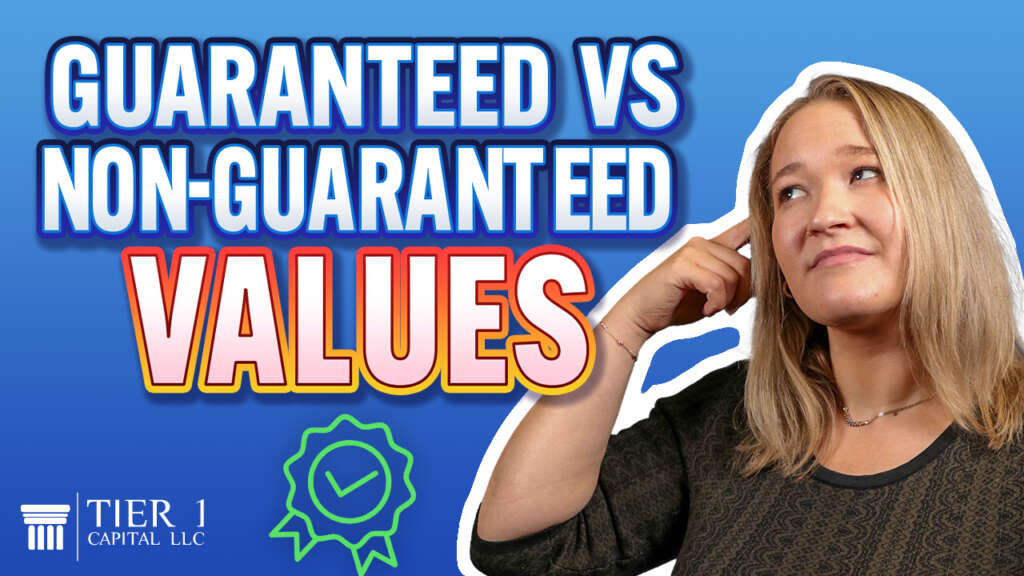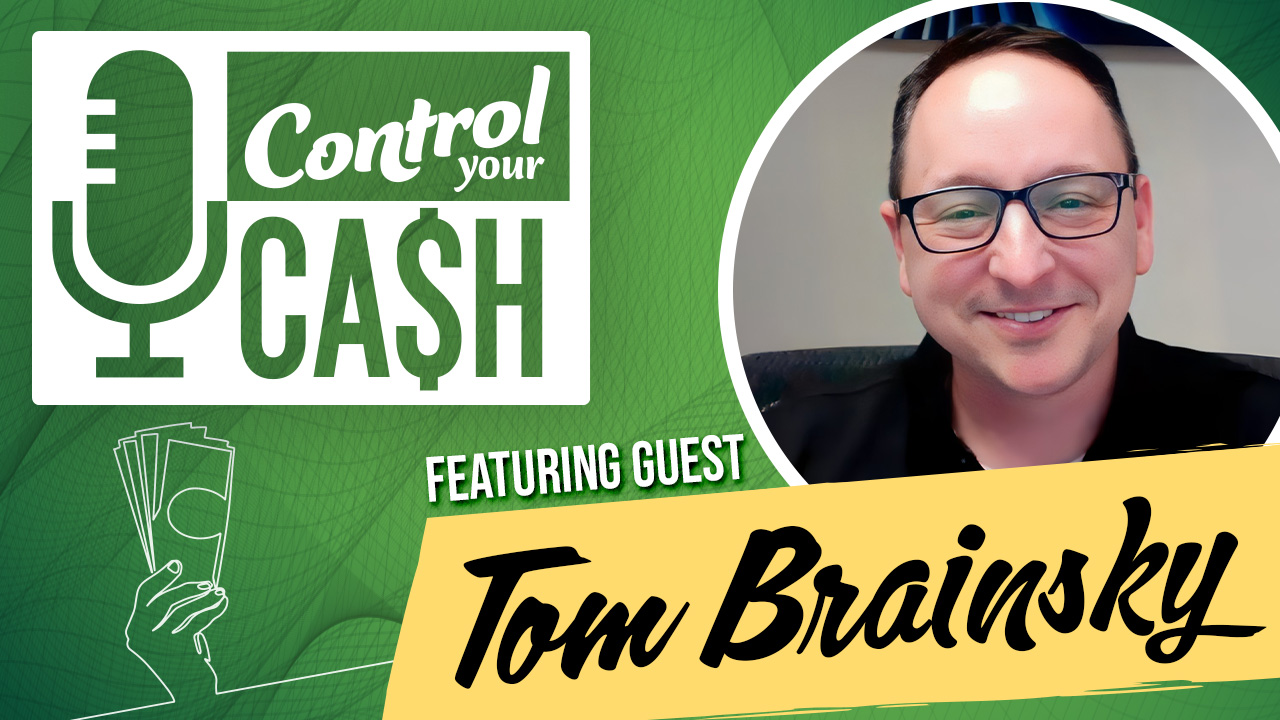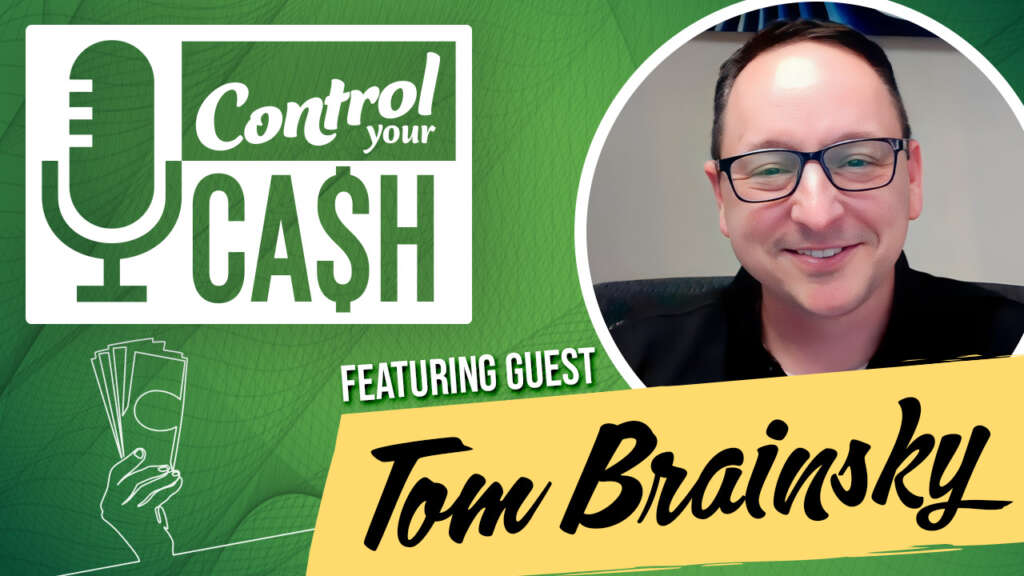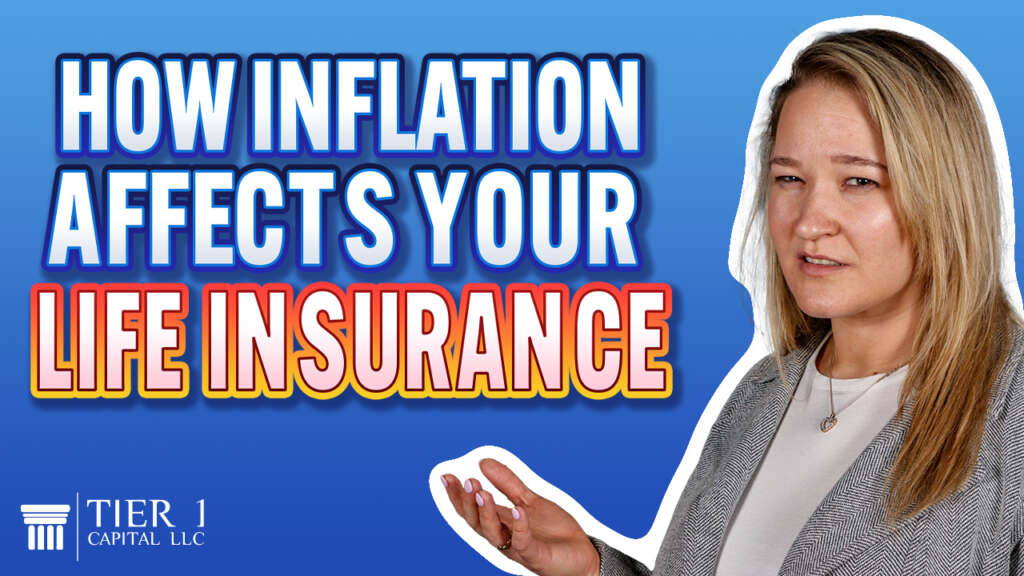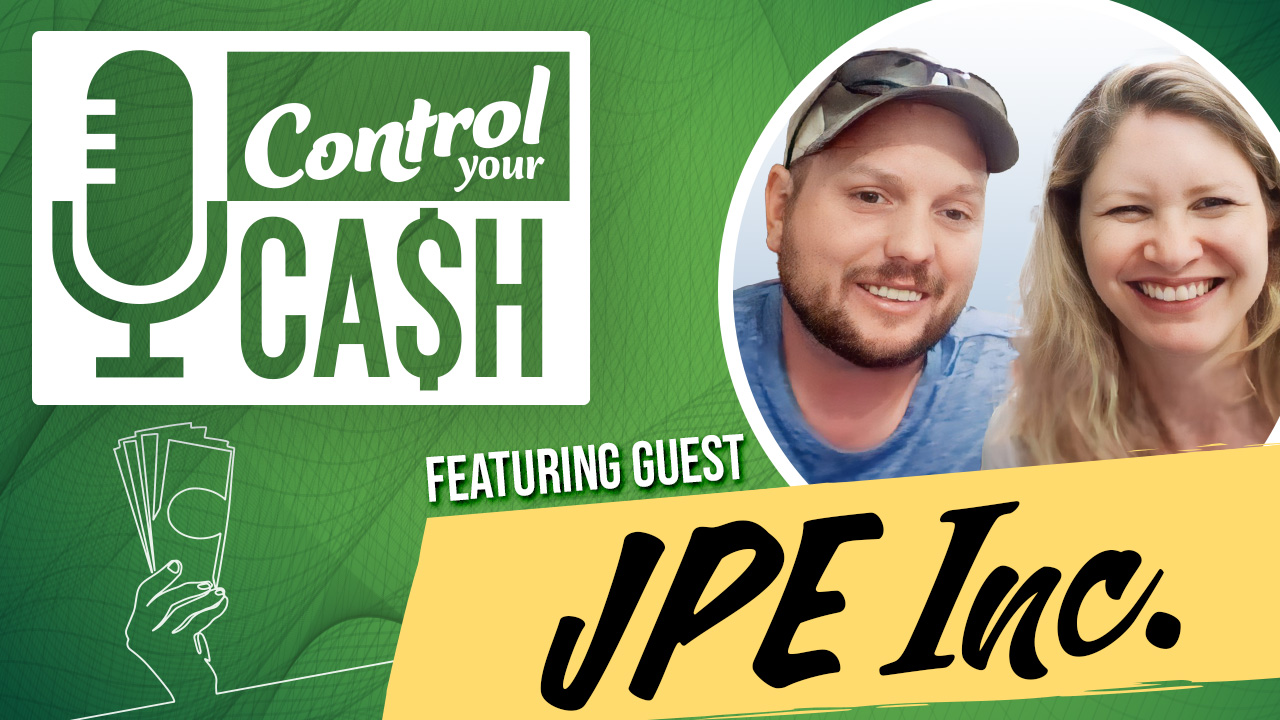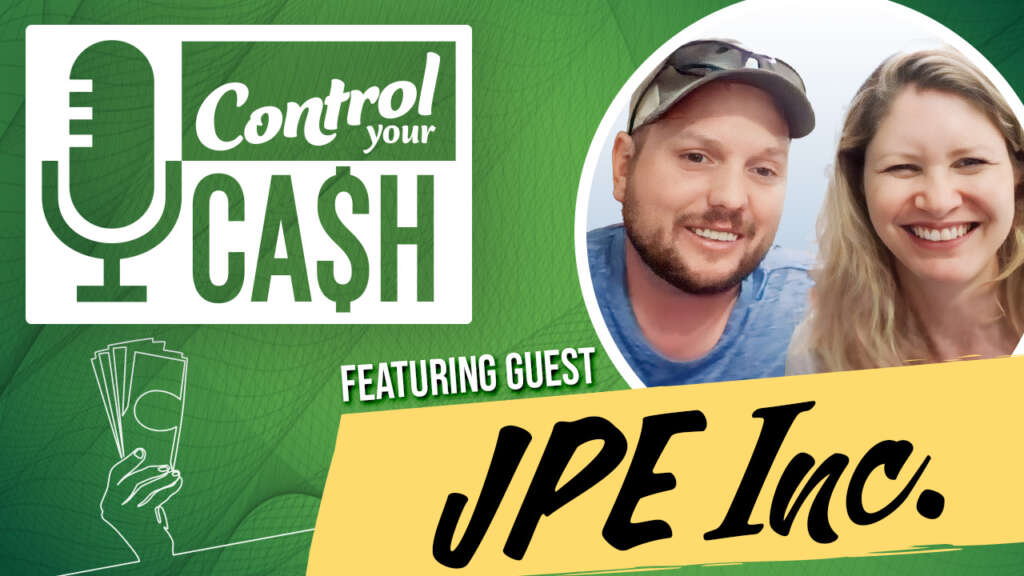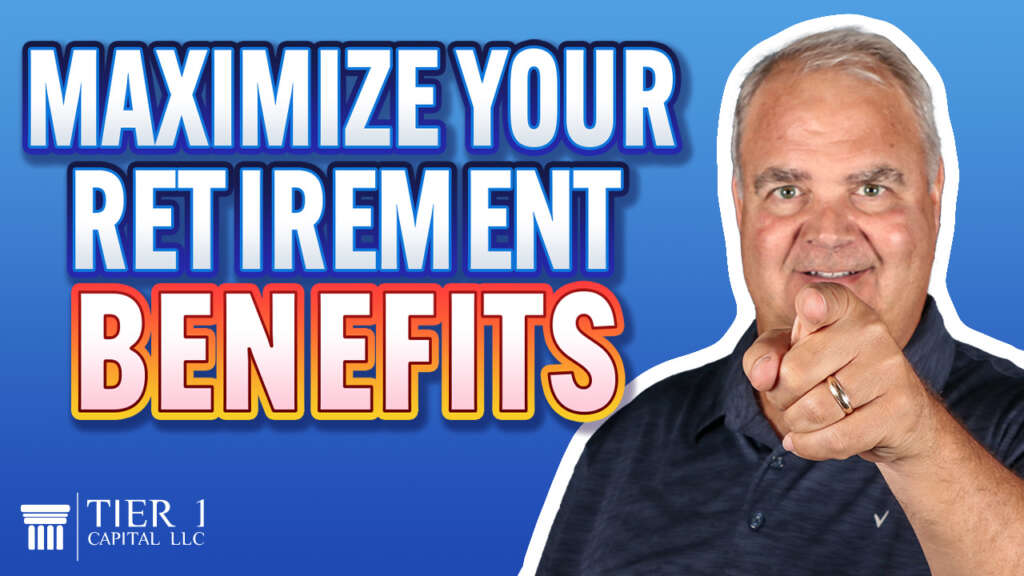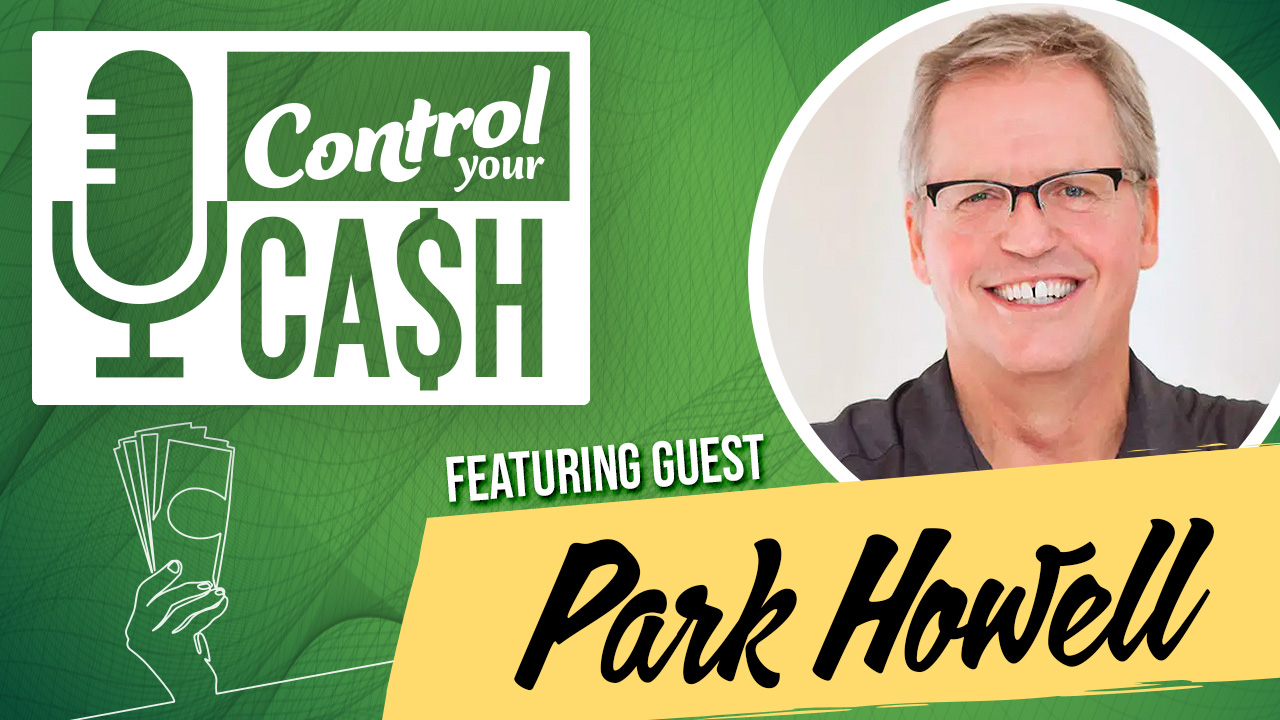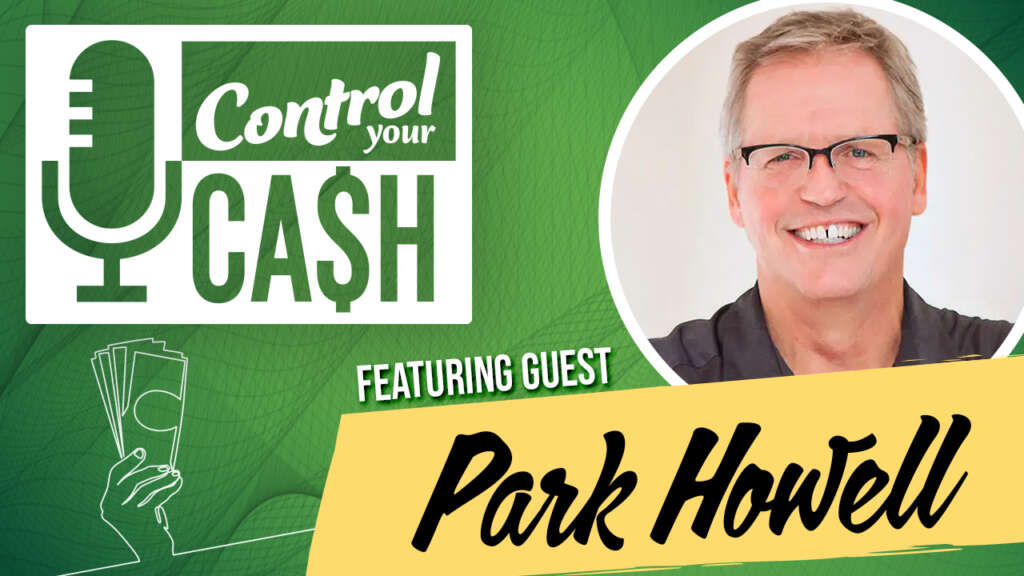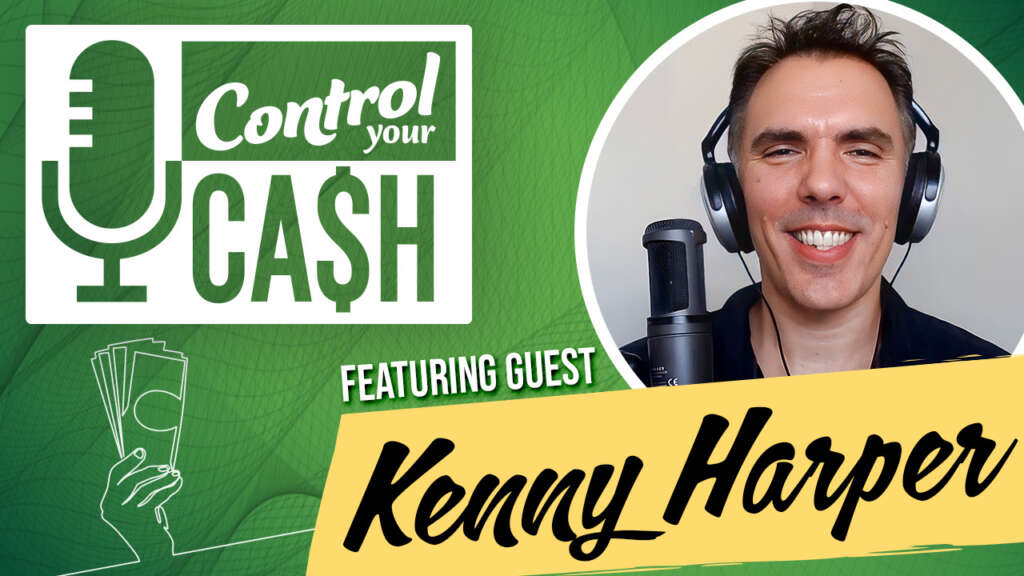
Episode Summary
In this podcast episode, Kenny Harper joins Tim and Olivia to share his personal journey from being employed in advertising to starting his own business. He emphasizes the importance of connecting with clients on a personal level and highlights the pivotal moment when he decided to pursue his own venture. Despite facing initial challenges and a lack of business knowledge, he hired a business coach to guide him and ultimately saw significant growth in his business. Kenny also discusses the misconceptions about coaching and marketing, emphasizing the value of investing in self-development. Additionally, he sheds light on the common mistakes businesses make in their marketing efforts and offers insights into how to approach marketing effectively.
Guest Info
Growth Amplifiers website, Growth Amplifier Free Book, Kenny’s LinkedIn, Kenny’s YouTube
Key Takeaways
Embracing Challenges and Learning from Them:
- Kenny emphasizes that facing and overcoming challenges is a crucial part of personal and business growth.
- He shares a challenging experience where a business partner’s unexpected departure led to financial difficulties. Despite initial frustration, he learned valuable lessons from this situation.
The Importance of Transparency:
- Kenny believes in the power of transparency. He learned that it’s essential to be open about challenges and failures, as sharing these experiences can help others who might be going through similar situations.
The Value of Relationships:
- Building strong, genuine relationships is at the core of Kenny’s approach. He focuses on guiding potential customers through a well-defined customer value journey to build lasting connections.
Balancing Ego and Vulnerability:
- Acknowledging one’s vulnerabilities and working through personal challenges, rather than trying to force through them, can lead to personal growth and ultimately benefit those you serve.
Transcript Below
Olivia: Hello and welcome to the Control Your Cash Podcast. Today we have Kenny Harper, a renowned business coach from Growth Amplifiers. Kenny, thank you so much for being with us today.
Kenny: Glad to be here and glad to be participating and sharing some helpful insights. Some of the things I’ve learned in my experience to help others on theirs.
Olivia: Great. It’s great to have you. I know that you’re going to bring a ton of value to our audience today. Um, do you want to start by telling us a little bit about your backstory, how you got started in this industry?
Kenny: We’re gonna go way back, way back to when I was a kid. You know, cause I believe, you know, we’re all born with unique purpose. We all have our individual talents, and sometimes we find them quickly, and sometimes it takes the scenic journey to find how to shine our light, how to show up as our best self.
As a kid, I was a little shy.
I kind of was, um, quiet, didn’t know how, how to connect with others, more of the artistic type. The loud, boisterous, um, sports professionals, they were complaining and competing about achieving their goals. I didn’t quite align with them. I like to play and be creative, but along the way, I realized that that quiet self, I developed empathy for others.
Empathy for those who maybe did things a little bit differently or weren’t on the top, weren’t the top, most successful, passionate people and connected with them. Then about the time I turned 14, my cousin took me to a rock concert and I, I got into rock bands and played rock and roll.
And that was the first passion that I pursued where I was like, this is really what I like, but I didn’t learn the business side of how to be successful with that gig. So at some point in time, I had to find a way to pay the bills when I started getting just a little bit older, becoming an adult, and I found out that about marketing and advertising and helping people with, with design and using that creative mindset to still help others still use that creativity.
But now I found a way to get a job, to be employed with that. And I went to school for it, graduated top of my class, worked for some of the best advertising agencies uh, it was really great experience, but I had that little thing inside of me that was like, Hey, do you ever want to try doing your own thing?
Do you ever want to try going out there on your own? And it was about almost 12 years ago now. Oh my gosh. And I had just got married. I bought a house, had a kid on the way. And what I started to notice is that the clients and projects that are really appreciated and loved were the ones that I was getting to connect with the owner connect with someone who had more control and seeing how it could light them up, seeing how it could help them see their vision at a different altitude versus the large conglomerate, um, corporations or brands that they’re making money, but I don’t get to connect with people. So I said, if not now, when?
If I don’t try this now, is it going to get easier later? Probably not. So although I had a nice steady salary, although I had a vacation package and benefits, I said, let’s give it a shot.
I jumped out
And on my own. And I didn’t know, honestly, if it was going to work. I was going to be a freelance web designer. I’m like, we’ll see if this happens, see what happens. I’m going to try it for a year. If I do do it good, then maybe I’ll continue. If not, then maybe I’ll get a job again. I don’t know. Well, remember that whole thing I told you a little bit back where I was following my passion, but I didn’t really know enough about business. Well, that same thing revisited me.
I learned how to do another trade, another craft, but I didn’t know enough about business. And I was watching my bank account say dwindle because I didn’t, I didn’t know the business side of running a business. I knew what I did for a trade. And I, that’s when I really hired my first business coach because I was like, I really don’t know what I’m doing and I want to know. And what I really appreciated about having a coach was. It helped me step into my true potential. And I had the, the knowledge, passion, drive, but I didn’t know what I didn’t know. I had a blind spot and without having someone to help me see that and help hold me accountable to achieve my personal best. I probably would have been getting a job, but I was able to get past that hump.
And started to grow my business. I met a business partner and we started a marketing agency, started hiring some people. We were elevating our firm and things were working really well. And I, I again, started to notice a trend where, you know, I can, I can do work. I can manage people, but what I really like, what’s my zone of genius.
Where I always get people complimenting me is when I’m connecting with people directly really understanding what they’re trying to achieve and help empower them to get past their fears, to get past their blocks so that they can achieve their personal best. I was inspired by my coach. And over the past decade, I’ve devoted myself to learning the knowledge, the skills, the disciplines to help empower people to perform at their personal best.
So when I started my business, uh, the agency was Rock My Image. It was playing off the background in rock music. And we were initially helping people with their image and their brand. But then as, as it evolved and started to helping more holistically realize that name was a little misleading. So hence the name Growth Amplifiers.
And really trying to help people see holistically, what are the actions you need to take? What are the things you need to do to grow, to achieve your full potential? So I’m inspired, I’m driven, blessed, grateful, and I’m grateful for the, for the wins, but also for the, the challenges as well, because that has empowered me to be able to help people avoid taking the painful, scenic route.
Tim: Well, you know, it’s, it’s funny you mentioned that because there’s an old saying that success is a poor teacher, but we learn a lot when, you know, when we’re going through the struggles and we’re, we’re, we’re making the mistakes. That’s when you learn and you grow at a faster pace. And we have seen that, I have seen that, in my own practice and personal life, and I’m sure Olivia could, uh, amplify that.
Right, hon?
Olivia: Yeah, yeah, absolutely. Um, it’s funny. It’s, it’s like when, when the student is ready, the teacher will appear and you could hear something a million times, but when you’re ready to hear it and only when you’re ready to hear it after you’ve made the proper mistakes on your path, um, does it hit you and does it resonate and does it, um, inspire change and action.
Um, and it’s funny because, you know, I feel like so many people can relate to this. I mean, because no matter what life is, life is never perfect. Um, and we always, no matter how good we are, we always have room for growth and improvement and, and to work on ourselves to be better, to be our best selves and that best version of ourselves.
So I love what you do and I love, um, what you bring and how passionate you are about it.
Kenny: Well, thank you very much. You know, I was reading a book this weekend, which happened to be on coaching. Um, and it was talking about how, like, no one needs coaching. It’s like, no one needs coaching. You don’t have to have it. However… If you want to go further, faster, you might want coaching, right? It can help you.
And some of the best, most successful people have multiple coaches. So I think there’s, as there’s been a, an opening an awareness of like mental health in the past few years, people’s mental health and fitness. I think there’s also an evolution of what people understand coaching to be. It’s not for people who are struggling.
I mean, sure. People who are struggling might need. Might benefit from having a coach, but people are doing good and are already successful, can still benefit. As the top athletes, champions, and Olympians have coaches to help them get to the best version of themselves. So it’s, it’s really a shift of the minds.
And I know I, I didn’t have that mindset early on, and I’m grateful that I’ve developed it.
Tim: Yeah, you know, that’s a great point because, you know, you look at these guys that are on the PGA Tour and they don’t have one coach, right? They have a nutritional coach. They have a fitness coach. They have a swing coach. They have a short game coach. They have a putting coach. And then they have. Like a psycho-, like a, uh, what do they call it?
Like a, a Sports psychology coach. And when you hear these guys talking after they. Win a tournament or something, you know, well, you know, my, me and my team got together and we had, we made these adjustments and it’s, it’s amazing when you see the amount of success that they’ve had and think, oh, wow, that just all comes naturally.
And it doesn’t. And it’s, you know, anything that you can be good at. You can be better at with coaching and you can be better at when you focus on the things that are important to making you better at those at those skills.
Kenny: Very nicely articulated because I know you have like a. A lot of knowledge and expertise to help people see things deeper, to help like see through the matrix, because we’re busy managing so many different things from day to day. We can’t be the master of everything and even if we know things and learn things, eventually we can start getting tunnel vision in our own worlds.
We can get into our own way. We, like, wasn’t I supposed to be doing that? Oh, yes, I was.
Olivia: Yeah, absolutely. Um, another thing I was thinking about is how success leaves clues and what one person could do another person can do. And that I feel like is, um, something that a coach is so valuable for, you know, they’re able to bring experiences and knowledge. And another thing that comes to mind is, you know, most people get into business to be their own boss to make their own way to, you know, take a chance and become their own source of income. But with that, there’s not necessarily a lot of training. You know, anyone could start a business. Um, anyone could start a business, but that doesn’t mean, you know, even if you have 90 percent of the skills, you could still do better, um, for yourself, for your community, for your family, for your employees.
There’s a lot of, there’s a lot at stake when you’re a business owner.
Kenny: And there’s probably like just like selling can get a bad rap, you know, people have some people like, oh, I don’t like to be sold to I don’t like selling and I agree that bad selling is bad. If someone’s trying to connect with you and push their agenda on you to sell something for their benefit, then that is bad.
However, if someone is honestly trying to understand your challenge and help you get what you want and resolve your challenges, and they’re sharing how they can do that, which is another way of selling, it’s more like. Consultative selling, then that is what helps people. That’s what makes the world go round.
That’s a positive thing. It’s the same thing with coaching because it’s really easy to call yourself a coach. It’s, it’s not like they have licenses, uh, for coaching. They do have certifications, but they’re not all made equal, but because a lot of people can say, Oh. I’m a coach and they can go out and they don’t really don’t know what they’re doing.
Um, and they could give bad advice or they don’t know how to do powerful, transformative coaching to really help people have the self inspection, um, reflection to make sure that they’re making meaningful change. To get to where they want to go. It’s a different skill level.
It’s a different understanding of how to operate.
The reason I’m sharing this right now is because, I still hear in conversation that they’ll say, if I can afford coaching. I don’t know if I have the time for that. And in reality, it’s like, how do you not have the, um, I guess the, the time, how can you not dedicate the time or find a way to invest in yourself when it’s all about helping you be the best version of yourself, like investing-
Tim: That’s a great point.
Kenny: -investing in your self development is perhaps one of the best things you could ever do.
Cause you are you, right?
Tim: Right.
Olivia: Absolutely.
Tim: So, Kenny, what are some of the biggest mistakes you see people doing when they, when, you know, when they’re sort of like DIY or, uh, for those of you don’t know, that’s Do It Yourself.
Kenny: So when it comes to Do It Yourself and from. I’ll talk from the marketing and sales side for a moment, for a moment. So I do business coaching and my background and expertise is more in the marketing and sales arena. And a challenge a lot of businesses have is. They, they get the tunnel vision on what they’re focused on and they may, they may suffer from one of these, these ailments.
So first off, we’ve got marketing that is exploding at such a rate. We can’t keep up with all the tools, software, uh, media channels that you could possibly get involved in. Even if you’re involved in one of them, they change so rapidly. It’s hard to keep up to date with the latest trends. So hearing all these different things. People are looking for the silver bullet bouncing from one idea to a next.
They’re trying to find that easy button
And by shifting gears and bouncing all around, chasing the shiny objects, they can’t really build laser focused momentum.
That’s a mistake to avoid. You don’t need to do everything.
To get focus on what works for you and then be consistent with it.
The second thing when people are trying to. Increase their business is they have a misunderstanding of what marketing is. They think marketing is advertising. I was talking with an attorney who said, well, we don’t need to market our business. We get most of our business through word of mouth. I said, I think you have a misunderstanding what marketing is. You’re at a networking event right now, that’s marketing. Do you think it would be beneficial for your customers to know the other services that you provide? Do you think they’re utilizing your services to the full capacity? Do you think it’d be helpful to make sure that they know how you’ve served other people and to let them know how you appreciate their business?
That’s, that’s marketing.
Uh, do you think it would be helpful to share with them the other types of businesses that you would like to work with so that you can get more referrals or introductions?
Those are all important things. It’s like, well, that’s what marketing is. It’s just, it’s not just lead generation, it’s not just new business. It’s looking at how do you provide value to those you serve? How do you ensure that they know what you do and that you appreciate them in the type of business that you would appreciate getting introduced to so that you can provide a great experience? So, and to keep it all condensed, it’s just not really looking at the, the full customer value journey from getting the marketing message to your ideal customer.
And then how to keep in contact with that, that customer to build a long lasting relationship that best serves them and provides more value to your business as well.
Tim: Nice. So, when? Do people normally engage with you or come to you? Are they looking to improve or are they sort of in crisis? In other words, Oh, my gosh, you know, my leads dried up completely. I need to do some marketing or, you know, four, four of my key employees left, you know, they went out and started their own business, you know, how do, how do you you, how do people generally onboard with you and like, are they like again, are they in crisis or are they looking to improve?
Kenny: So it’s, it’s a really good question. Um, because my people that may be looking for me aren’t necessarily my ideal customers. Uh, because more of somebody who helps people amplify good to great is more of an ideal.
Um, people who are struggling definitely can help them out, can help them get a framework so that they can have consistent results, can help them improve some bottlenecks they may be holding them back, but ideal customers are the ones that are doing good already. And they may not even be looking for me because they, they may think we’ve already got an internal marketing person. We already have a marketing agency. We, we already have things that are working for us. And I’m looking for the people that say, you know what, I know, I don’t know what I don’t know, and I want to do the best I possibly can so I can get the best possible result. And for them, I, what I do is I do a, uh, overlook of their customer value journey. Help them look at what they’re doing now, understand what their goals are, and help them see things that they may not have seen before. Explore untapped opportunities. Explore, um, the bottlenecks that could be holding them back.
Help them see their blind spots. And then I’ll just say, hey, these are things. That if you resolve these things and put them into action, you can maximize all of the marketing and sales efforts that you’re doing right now. So if you’re looking to amplify your results and you need help doing that, or your internal team needs help doing that, or the agency you work with could use a fresh perspective. Then let’s have a conversation and we’ll find a way to amplify your business.
A lot of the times, the people that are looking for me or end up reaching out. They, um, they are the ones that are looking for some help. They’re having challenges with what they’re doing now. They’re not quite getting the result they want and they, they’ve tried working with other firms, they’ve spun their wheels. And they’re, they’re getting like, I need to find something that works, but the ideal ones are the ones that are, that are doing good and want to do great.
Olivia: So, Kenny, what does it look like working with you? Is it, um, you know, a short term, um, consultation commitment, or is it more of an ongoing, you know, week to week or month to month type situation?
Kenny: So I’ve been working with a lot more service professionals, a lot of people in the B2B advisory sort of work, they’re helping advise people, whether that’s with their finances, with tax planning, kind of like as a controller or exit planning, retirement planning, things of that nature. And one of the things I suggest to them is, is to follow how I engage.
The challenge I see a lot of them making is you’ve got to hire us and commit to a full time gig if it’s going to make any sense.
So to answer your question, I’m more like prescribed based on the situation.
So in some cases you might have, if, I’ve worked with a company that they were selling real estate lots.
So lots of land in rural communities, they had an internal marketing team. They had a sales team, they had a marketing agency, and their challenge was they, they were just having trouble connecting. It was a little bit political. Uh, they couldn’t see their own blind spots. So I told them what I did and they said, you know what, it’d be kind of helpful if you could help us, like, meet in the middle, get better aligned, so we can get better results. So for them, I facilitated a workshop where I invited everyone from the team. We worked through some exercises and over a period of time, we helped, uh, define the biggest bottlenecks that were holding them back, how to resolve them for the current time, but also for the future so that they can, um, get past those bottlenecks and move forward. Um, prior to that sales was blaming the marketing that your marketing isn’t really driving good leads and marketing was blaming sales. You guys are doing a pooey job with the follow up. Once we give you the leads and what needed to happen was they needed to have a more refined process in the middle for building up the relationship prior to passing off to sales.
For other people. I have one of my clients that have been working with for about three, coming up on four years. And I work with him regularly. Initially understood what his business was and started helping out with his marketing system. But then in the past year, I’ve been working with this team to help get them aligned so that they can play a better role, so long story short, different results for different people. So if you, if you do serve people and like I was talking with the CFO that was trying to get more CFO clients and their offer was hire us for this term. I was like, what if they don’t do that?
Then they’re like, well, they’re not a good fit. I’m like, could you do something that, you know, maybe a strategy session that could at least help make a little progress. Like, that’s a, that might be helpful. I’m like, it would be because you’re losing business right now because there’s some people that probably really want your help.
They just have a block and they’re not ready to make that full commitment. But once they’ve worked with you a little bit and can see the transformation you could provide, they would be glad to follow you and work with you because you really do transform lives.
Olivia: Yeah.
Tim: Nice. You know, one of the things that, so the thing that we do is, this show is called Control Your Cash. And our whole focus in business is helping people and business owners find the cash flow they need. To fund their exit plan or to, you know, retain their key employees or to fund their succession plan.
And a lot of times they don’t realize that they have the money within their wherewithal. It’s just being utilized inefficiently. So everybody thinks that they’re using their money in the best way possible, right? Because you wouldn’t get up in the morning and say. You know, I want to see how much I could screw myself up financially this week, but nobody does that.
But the key is, so everything you’re doing, you think is moving you forward. Unfortunately, some things are actually holding you back. And what that leads to is maybe sometimes where cash is a little tighter than others. We have found, we had commissioned a research report and found that 61 percent of business owners around the world struggle with cashflow and 69 percent either sleep less or lose sleep due to cashflow concerns. So Kenny, if you could, share with us a time where you got sort of knocked on your butt, uh, you know, from cashflow or financially and tell us what led to that. Tell us what you were thinking as you were going through it and sort of how you got your way out of it, and what you, what you took away from that.
Kenny: So, oy, oh joy, reminiscing on struggles, but I’ll be glad to share. And it’s funny because there was a time that this situation really messed with my mind to the point where I was getting some bad anxiety over it. At the time, I was working to transition from being the director and manager of the agency to more into coaching and advising.
This is about five plus years ago. And I had a, I had two business partners. Now I have one, I did have a second one. And. That other business partner kind of had a change of heart with how they wanted to show up in the agency. It was a lady and I’m not going to point fingers. But, let’s just say we had an agreement of how things would work out and it didn’t work out that way.
So we ended up running into putting some, for the first time we ran, uh, put some bills on credit because we had her as the head communication person in our agency. When she started to pull out, we weren’t really in tune to that.
So around the same time, she said, I’m going to run with these new prospects. We lost our biggest accounts and we had debt, and we’re like, what the heck just happened? And I was so, um, I felt so victimized in that situation because I’m like, I would never do that to someone. We had an agreement. We could have communicated things differently, people, people change, and the cash flow, because we lost our biggest accounts and the, some of the opportunities that we had weren’t there anymore.
It got hairy. So what do you do when life hands you lemons? You throw them at the people who betray you. I’m just kidding. You make lemonade. So, I, I realized that we’re not going to give up we need to find a way to proceed and so I, I created a plan to be really focused and we said, we know a lot of people, we can provide a lot of transformation.We just need to get our message to more people.
So we’re going to host workshops and we’ve done workshops in the past, but typically it’s been like one a quarter. said, we need cash fast to turn things around quickly. And we put six workshops, six workshops on within a month’s timeframe, really get focused and said, how can we, who can we call, who are the influencers we know?
And not like online social media influencers, but like local influencers, because these were in person workshops. Um, how can we cultivate a workshop that provides a lot of value and helps people see things differently so that they can have transformation in their business? A lot of the content that we’ve put in that workshop is outlined in our book, Amplify: How to Maximize Your Profits and Claim Back Your Time.
On the five profit drivers in your business, the leads that you’re generating, the percentage of leads that you’re converting in the customers, the average number of transactions per customer, the average amount per transaction, and your profit margin.
If you can get focus on creating the systems to improve each of those five profit drivers, you can. Amplify your business. You can maximize it and take it to the next level. You can double your profitability without having to double your workload. It’s truly transformative. And so we did the workshop. We were able to find the clients we needed in the timeframe.
And the rest has been onwards and upwards since then, but to share one other takeaway so that the thing was don’t give up, but a bigger takeaway for me that I learned is has been impactful is during this, um, challenge. I was, my ego was so angry and victimized, and I felt like I’m the, I’m trying to be a business coach.
I can’t admit this out to the public. I can’t share this with other people. That was working against me. I, I was trying to be strong and plow through that. But luckily I was attending, um, some meetings with the International Coaching Federation. And I met a mindfulness practitioner, she was a coach that did a lot of mindfulness.
She was going through grad school and she asked if she could do some sessions with me for her grad school.
And I’m so grateful that I had that opportunity because what I realized was, had I not had some guidance and communicated some of those things, why I was having anxiety and stress was because I was trying to force through it versus process it and work through it.
And now, looking back, like, I’m fully transparent about it. I’m like, yes, I have mistakes. Yes, I have failed. I, I wear that as an object, um, badge of honor because it’s not failure that leads, it’s not like avoiding failure that leads to success. It’s, it’s failing again and again, and coming up with enthusiasm and drive and consistent persistence to achieve the result.
That’s how you get to success. So now I’ve, I share that with others because I know there’s a lot of people. That have failures that they’ve faced or are facing right now, and they’re fearful to share that and they don’t realize the impact that working to resolve that might have if they give themselves the grace of saying, you know what, maybe I did fail at this, maybe it did hurt me, but I’m willing to work through that now so that I can show up as the best version of myself, not for just me. But for my inner circle, for my family, for those I serve, so I could just be the best as that, that I can be. So that was a, the biggest challenge that I ever overcame. And I’m really grateful to have went through that in hindsight.
Although I wouldn’t have said that at the time.
Tim: Yeah, well, you know, well, thanks for sharing that because, you know, I, again, our biggest growth comes when we work through some problems and working through those problems isn’t a bad thing. You know? Yeah. Hey, it stinks when, when life throws crap at you or when you, when you get handed lemonades, you gotta make, I’m sorry, you get, get handed lemons, you gotta make lemonade. And uh, it’s really great to see that you have done that and more importantly that you’ve learned from it and you’re sharing that.
Kenny: I, I’m really glad and I’m advocate for being transparent and sharing those, those failures. And those lessons learned, we can get out of our egos, get out of the ego. It’s, it’s, it holds us back. It really does. We don’t even realize it’s, I didn’t even realize how much of a grip on it until going through some of that work.
But that was, that was my ego saying: Victim! Revenge! Rahhhh!
Tim: How dare she do that to us?
Kenny: Poor me.
Olivia: But hey, you came out on the other side stronger and, you know, I think, thank goodness, hindsight is 20/20. Um, and you’re able to reflect back on that and learn the lessons. But more than that is have that lesson to share with others and have that. Ability to connect with others because so many people go through the same exact thing and are afraid to talk about it so you coming forward and speaking on it and talking about it from a perspective of gratitude and coming out on the other side with more to give is really inspirational
Kenny: Thank you. And I’ll, I’ll share. That I hold no ill will to my partner. I was frustrated at that period of time, but now I’m wishing her the best. And you being grateful for that experience. Cause it, it did help me grow. It helped me step into a different level of leadership and challenged me to be a better version of myself.
So like you said, you can look at it with the right perspective.
Olivia: Yeah.
Tim: Yeah, that’s awesome. So, Kenny, share with us also, like, some, uh, what resources have been beneficial to you, whether they’re, you know, books or authors or websites or technology tools? What, what, what, what are you finding that’s, that’s worked for you in the past?
Kenny: So I’m a certified DigitalMarketer, uh, trainer and advisor. DigitalMarketer is a company based out of Austin, Texas. They help put on one of the biggest conferences on marketing called traffic and conversion and their concept of the customer value journey, which I alluded to earlier and really focusing on optimizing your customer value journey, looking at the different stages of the relationship that you have. With your potential customers and guiding them from one stage to the next. You can craft a process to get your message in front of your ideal customers and seamlessly and subtly guide them to become customers that pay, stay, and refer. You can avoid doing a lot of excess work, spending a lot of time creating content, a lot of time doing busy work and just work on the 20 percent of the efforts that give you 80 percent of the results.
By honing in, looking at that and fine tuning it. It’s like building an engine versus trying to be the master of plethora of different marketing trends and sales techniques and all that jazz. Just build good relationships and optimize the process that does that, the systems that does that. Uh, so that’s, that’s one is the customer value journey optimization from DigitalMarketer.
Um, a book that I, I really like, um, is Positive Intelligence. So this is a book on how to develop mental fitness. So, inspired by some of the challenges that I went through and also working with other business advisors who were running into their own mental blocks. I didn’t have a framework to help them through that, but Positive Intelligence is a framework to help people strengthen their mental fitness so that they could reduce their saboteur self, sabotaging thoughts and habits and step in to their better version of themselves more often. So I went through that program and got certified through Positive Intelligence as well.
Uh, it’s a great book and what I really like about it is it takes a really complicated process that I’ve studied in the past about mindfulness, about habits, about thinking, personal development, and makes it to a easy to understand process that you could share so easy that even my kids understand the concepts and have been implementing them into their development.
Olivia: That’s pretty cool
Tim: Nice, thank you for sharing that. Kenny, how could people, uh, get in touch with you? What’s the best way?
Kenny: So my website is growthamplifiers.com. And if they went to. Growthamplifiers.com/success. Um, we’ve got a free download of our book, um, we’ll have our assessment that you can take on there. If you have business and you’re looking to perhaps see some of the blind spots that you may have, get some direction on which areas you can improve upon to maximize your results.
You can take our free assessment, you get a checklist. And you can also find me on LinkedIn, Kenny Harper, or YouTube, Kenny Harper. And I will share that, approach to building relationships, business relationships. It’s not to try to sell anything to anyone. So if you do go to our website, growthamplifiers.com/success, and you opted into one of our assets, we’re not going to try to sell you things. We’re simply going to share resources. And if you want our help, then we’ll be there to help you out.
Olivia: We appreciate that Kenny.
Tim: Very nice.
Olivia: And thank you so much for joining us today. I know that you brought a lot of value for our listeners and a lot of value to your clients based on what you’ve shared with us today, um, your positive light. And we greatly appreciate you spending time with us here today.
Kenny: Thank you so much. I appreciate the opportunity to be here.
Olivia: Absolutely.
Tim: Well, Kenny Harper, thank you very much, and, uh, we look forward to having our growth amplified.
Kenny: Yes!


